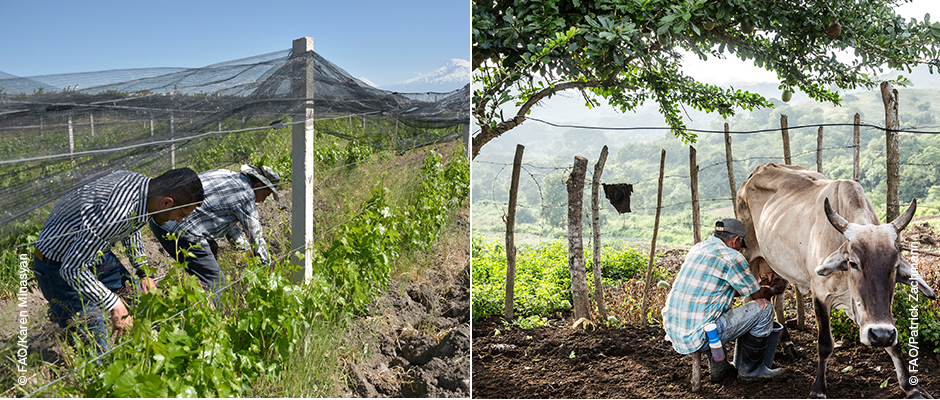New toolkit shows how to empower smallholders through transparent microfinance practices

The FAO Investment Centre, with support from the European Commission, has launched a new Investment Toolkit, titled Understanding microfinance interest rates in agrifood, which demystifies the complexities of microfinance interest rates and offers critical insights into responsible lending practices.
The toolkit is designed to be a practical resource for impact investors and financiers which fund microfinance institutions. These investors aim to expand social impact for smallholders and agrifood micro-enterprises and ensure reasonable financial returns so that these impacts are sustainable.
Interest rates in microfinance have long been a contentious issue. The disparity in interest rates between poor borrowers and wealthier peers can appear contradictory to the social mission of microfinance.
"This toolkit offers a structured method for analyzing microfinance institutions’ interest rates individually, helping impact investors make informed decisions," said Mohamed Mansouri, Director of the FAO Investment Centre. “By promoting responsible lending, we can help smallholder farmers and micro-borrowers in agrifood systems thrive.”
Why are microfinance interest rates often so high for the poorest borrowers?
The toolkit looks at the various components that contribute to microfinance interest rates, such as costs of funds, operating costs, loan-loss provisions and profits.
Notably, operating costs, which often constitute over 50 percent of total lending costs, are significantly higher for small loans typically issued in rural areas.
The toolkit helps investors and financiers understand these dynamics and evaluate whether interest rates are reasonable.
Crucially, the toolkit highlights the challenge of non-transparent pricing practices that obscure the true cost of loans and hinder competition and client decision-making.
Frank Hollinger, Senior Rural Finance Officer at the FAO Investment Centre and author of the toolkit, emphasized the importance of transparency in pricing. "Whether a microfinance institution sets prices transparently and responsibly should be a key consideration during due diligence. This process should assess the microfinance institution at both institutional and product levels, ensuring that clients benefit and are protected," Hollinger said.

Empowering investors and promoting client protection standards
Drawing from extensive literature and secondary data, including the Microfinance Information Exchange (MIX) market database and MFTransparency, the toolkit advocates for principles from the Client Protection Standards (CPS) developed by the Social Performance Task Force (SPTF) and CERISE.
These standards call for transparent and responsible pricing, ensuring that loan products are both affordable for clients and sustainable for institutions.
"Impact investors and development finance institutions play a crucial role in promoting responsible lending practices. This toolkit provides them with the tools to assess microfinance institutions’ interest rates and ensure they align with both affordability for clients and sustainability for financial institutions. Improving access to finance for all stakeholders of agricultural value chains, to foster sustainable growth, remains a key priority of the EU Global Gateway approach. We are happy to join our efforts with FAO in this endeavour, " said Carla Montesi, Director for Green Deal and Digital Agenda at the Directorate-General for International Partnerships of the European Commission.
Impact investors are encouraged to support microfinance institutions in improving their lending practices. This includes signing commitments to implement the CPS and providing technical assistance to enhance product features and reduce credit costs.
For all impact investors and financiers involved in microfinance and rural development, this toolkit is a valuable resource, setting a benchmark for responsible and transparent lending in the agrifood sector.
